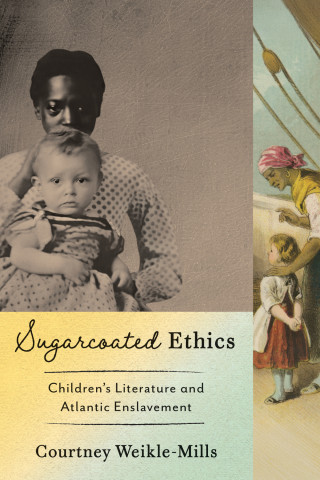
Reviews
Like the characters in the realist novels she analyses, Sympathetic Realism encourages us to think along with it.
The clarity of Greiner’s models of both sympathy and realism is one of the most remarkable features Sympathetic Realism, but it is often through her excellent close readings that these models came alive.
Among a spate of recent books on the topic, Rae Greiner's Sympathetic Realism in Nineteenth-Century British Fiction distinguishes itself through its sustained focus on sympathy as a form rather than a feeling... It is not merely fitting, but exciting, to discover that a work dedicated to theorizing relations should itself pose a new relation between critical debates enjoying simultaneous, but heretofore separate, revivals of critical interest.
Rae Greiner's Sympathetic Realism in Nineteenth-Century British Fiction is an ambitious, clever, and beautifully written study that promises to reorient our understanding of Victorian sympathy and the works of those who wrote about it and tried to trigger it... Greiner makes an excellent case for a reappraisal of the aims and accomplishments of realism... Her book is a welcome and erudite addition to a growing list of critical works on sympathy that defy the obviousness of the phenomenon they study and thus refresh our ability to consider what it is, was, and does.
Greiner's readings are consistently smart and insightful.
Sympathetic Realism is a rewarding, continually interesting book. It casts new light on major nineteenth-century realist novelists, while demonstrating that the realist frame of mind can be found in other kinds of writing as well. It contributes to the growing stream of criticism concerned with the ways in which narratives can help to create and strengthen our sense of self... Those who go along with Greiner will find the journey worthwhile.
Sympathetic Realism is a rewarding, continually interesting book.
In this invigorating book, Rae Greiner takes a familiar topic — the workings of sympathy in nineteenth-century fiction — and shows us how to think about it in new and highly productive ways... Building on a solid foundation provided by prior critics, Greiner makes a persuasive case for thinking anew about sympathy: what it is, how it works, and why it proved so vital to the development of novelistic realism.
A highly accomplished, smart, and original piece of scholarship that will make a significant contribution to the august tradition of criticism and debate on the nineteenth-century British novel.
Book Details
Acknowledgments
Introduction: Thinking of Me Thinking of You: Sympathetic Realism
1. Going Along with Others: Adam Smith and the Realists
Part 1: Smith's Sympathetic Protocols
Part 2: Sympathetic Form
2
Acknowledgments
Introduction: Thinking of Me Thinking of You: Sympathetic Realism
1. Going Along with Others: Adam Smith and the Realists
Part 1: Smith's Sympathetic Protocols
Part 2: Sympathetic Form
2. The Art of Knowing Your Own Nothingness: Bentham, Austen, and th eRealist Case
Part 1: Sympathy and the Case for Realism
Part 2: Persuasion and the Sympathetic Case
3. Dickensian Sympathy: Translation in Proper Pitch
Part 1: Harmonizign in Other Words
Part 2: Form's Proper Pitch
4. Not Getting to Know You: Sympathetic Detachment
Part 1: Sympathetic Detachment
Part 2: Groupthink in Conrad and James
Coda: Sympathy versus Empathy: The Ends of Sympathy at Century's End
Notes
Bibliography
Index





